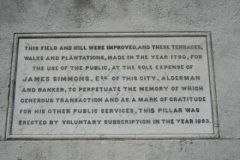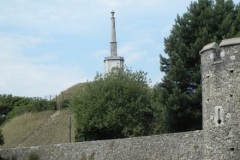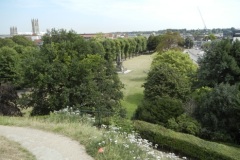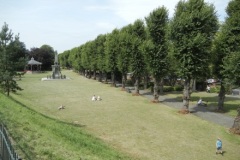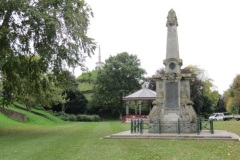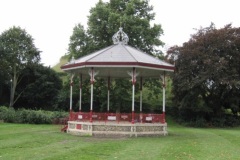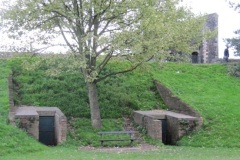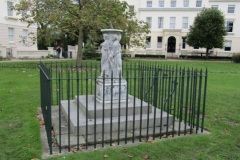Between Castle Row & Watling Street
Introduction
The name Dane John is a corruption of the Norman word ‘Donjon’ meaning a fortified mound. There is still a mound within the gardens today.
History
The Romans built the city wall to incorporate an ancient mound. Later the Normans built their first castle on top of the mound but it was soon replaced by the present Norman Castle built to the west. The area seems not to have been built on after that, remaining open ground; so almost 700 years later Alderman Simmons was able to lease the land from the city Council and he created a garden between 1790 and 1803. The Norman mound was re-modelled to its present shape at this time. After a disagreement between the alderman and the city council it was taken back into public ownership and has remained so ever since. Simmons’ public spiritedness in giving the city the gardens is commemorated by a monument which stands on top of the mound known as ‘Dane John’ (Image 1). Soon after the completion of the garden, fine houses were built fronting the gardens as can be seen today. On the east side is a row of houses with mansard roofs, typical of the late 18th century and on the west side a terrace of houses of the early 19th century.
What to see:
- The city wall and the embankment form a prominent feature of the south side of the park (Image2)
- The vista over the city from the top of the mound (Image 3)
- The long walk across the garden flanked on either side by lime trees, now over 200 years old (Image 4)
- A fine war memorial made of the Cornish stone Polyphant was erected in 1903 to commemorate the many members of the local regiment, The Buffs, who lost their lives in the Boer War. The designer was architect W D Caroe and the inscriptions were by Eric Gill. This was restored in 1999 (Image 5)
- A Victorian bandstand was sold for scrap metal during World War II; this was re-created with a replica in 1999, (Image 6)
- Shelters, near the bandstand, were built in the embankment of the city wall during the World War II to store ammunition (Image 7).
- Another memorial within the gardens is the Weekes Sundial, this is a copy, the original being in the City museum (see Image 8).
- More recent sculptures in the gardens are the Peace Pavement, the fountain known as The Font (1999) and the Silent Table (1999)
Access: A public garden open at all times
Sources: Canterbury City Council plaques; Panton (2007); Ingram Hill (2004); for more on Polyphant stone, named after the Cornish village of that name, see an article by Geoff Downer which appeared in the south-east branch newsletter 4/08 of the Open University Geological Society
AT

